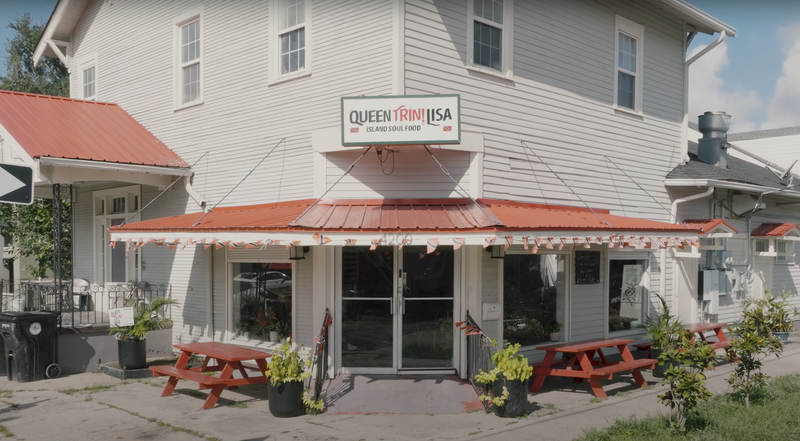This New Orleans Nonprofit Is Turning Restaurants Into First Responders

- Oops!Something went wrong.Please try again later.
Hurricane Ida still looms large in New Orleans. In late August 2021, the category 4 storm ripped through Louisiana with record-matching sustained wind speeds of 150 mph and a low pressure system of 920 millibars, close to Katrina’s record-topping system in 2005. And while a hurricane poses immediate danger, its damage casts a longer shadow—which is what got Devin De Wulf thinking about how restaurants recover in the aftermath.
“In the days after Hurricane Ida, I wasn’t able to evacuate,” De Wulf tells The Takeout. “My house has solar panels and batteries. And because we stayed, I got a really good experience of how my house could help my neighborhood as a microgrid. We had no power for 10 days and my house became a phone-charging station. I had ice machines working so I could give people ice to help them cool down.”
Read more
One of the ways a hurricane can turn deadly is by knocking out power systems. Without electricity, there’s no air conditioning, and no ability to run necessary health equipment. (Because the storm occurred in August, many of the deaths caused by Ida were heat-related.) As De Wulf’s house turned into temporary infrastructure for his neighborhood, he saw another major issue stemming from a loss of power: hunger.
“You could start to tell by day four, day five, that people were going hungry around the city,” he said. “And at the same time, restaurants were just throwing away all of their food.”
De Wulf is the founder of Feed the Second Line, a nonprofit organization founded during COVID whose initial project was to provide elderly and economically disadvantaged residents with groceries. As Feed the Second Line’s website reads, “Recognizing that much of New Orleans culture is created by regular folks, we wanted to support others who make our city’s vibrant street culture - baby dolls, Black Masking Indians, Second lines, musicians, and more.” Hurricane Ida, however, presented the nonprofit with a chance to expand its mission.
How restaurants can serve their communities
After observing how restaurants were not able to stay open for residents in the aftermath of Ida, De Wulf envisioned a way that they could, even following a hurricane. So began Get Lit Stay Lit, an initiative to install solar panels on restaurants across New Orleans so they’re able to keep their doors open to the public.
“Restaurants are able to feed lots of people, they have that skill set,” said De Wulf. “If you empower them and they’re able to not lose power, they can be there to feed the community.”
As to why Get Lit Stay Lit focuses on restaurants, De Wulf points out that while many areas of the city are so-called food deserts, low in grocery store access, these same areas probably have at least one restaurant. And because evacuation is an option many residents can’t afford, those who stay during storms should have both food and power made available to them.
“I think we should take a block-by-block approach to resiliency and making sure that nobody in New Orleans is more than a 20-minute walk from a microgrid,” he said. “I think that can be accomplished by using restaurants.”
The plan takes something of a pay-it-forward approach: If and when disaster strikes, restaurants equipped with solar and battery power would be able to operate as normal (or as near to normal as they can), cooking meals. While there is no mandate placed on how these businesses choose to operate in the event of a power outage—they can use the microgrid as they see fit—the hope is that the restaurants will become community hubs, helping neighbors in need.
So far, Feed the Second Line has completed three solar panel installations, with each one costing between $60,000–$90,000. And with a goal to eventually equip 300 restaurants, Feed the Second Line will need a hefty chunk of change, to the tune of $9 million, De Wulf estimates.
How solar panels empower restaurants
Feed the Second Line’s plan comes with other benefits, too: With solar power, a restaurant can save money on its energy bill, setting a positive feedback loop into place.
“The way we have the restaurant pay it forward is they can donate back into the effort $200 a month,” De Wulf explained. “So if we get 300 restaurants doing $200 a month, that’ll pay for other microgrids… that would create a kind of never-ending pipeline for these types of resiliency projects. They’d be self-funded.”
And while the nonprofit has been able to secure enough funding to get the ball rolling, it’s hoping to receive federally allocated dollars, too. Get Lit Stay Lit is, after all, a hurricane relief program, albeit a novel one, preparing communities for disaster and keeping money local at the same time.
At their core, restaurants are community institutions, reliant upon the public that relies on them. Equipping those businesses with the tools to operate even when traditional power grids fail effectively transforms them from third places to first responders, a hub to keep locals fed, cooled, and charged up. In a city like New Orleans, where restaurant culture is both historically heralded and also constantly in danger, solar energy can lend restaurant owners more agency, bypassing government inertia to deliver tangible results.
More from The Takeout
Sign up for The Takeout's Newsletter. For the latest news, Facebook, Twitter and Instagram.

